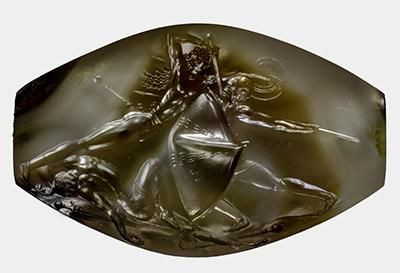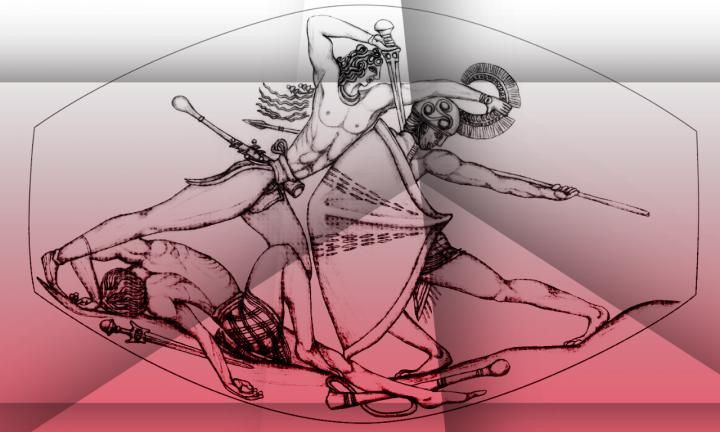‘Pylos Combat Agate,’ Ancient Greek Seal, Fine Specimen Of Miniature Prehistoric Art

Laser engraving can make microscopic etching or miniature art seem really simple, but the technology for it didn’t exist till a few decades ago. And while examples of miniature art have been found from over 1,000 years ago (like writing on rice grains from what are now India and Turkey), a find from ancient Greece is remarkable nonetheless.
The “Pylos Combat Agate” was found in the 3,500-year-old tomb of a Bronze Age warrior near the ancient city of Pylos in southwest Greece, which was unearthed a little over two years ago. It is a sealstone — a stone used to mark seals of authority — so-named for its intricate depiction of fierce hand-to-hand combat. The gemstone itself is just 3.6 centimeters (about 1.4 inches) in length and many of the details of the etching are visible only under magnification.
The tomb of the so-called Griffin Warrior was unusually intact and it contained the remains of someone researchers think was a Mycenaean warrior or priest, buried along with a treasure trove of riches, among them the Pylos Combat Agate, which was found face-down near the right arm of the Griffin Warrior’s skeleton.
The etching on the stone depicts a warrior in battle with two foes, one of which lies bleeding and dead at his feet. The warrior is plunging his sword into the neck of the enemy still standing. The details of weapons, jewelry and even human anatomy are nothing short of breathtaking, especially given the small scale of the piece.
The seal was encrusted in limestone, and it took researchers over a year to clean it up, according to a statement Monday by the University of Cincinnati.
Shari Stocker from the university, who was the dig leader in 2015, said in the statement: “Looking at the image for the first time was a very moving experience, and it still is. It’s brought some people to tears.”
Her husband Jack Davis, also a professor at the university, who was involved with the dig, added: “What is fascinating is that the representation of the human body is at a level of detail and musculature that one doesn’t find again until the classical period of Greek art 1,000 years later. It’s a spectacular find. … Some of the details on this are only a half-millimeter big. They’re incomprehensibly small.”

While the Griffin Warrior was Mycenaean, many of the riches found in his tomb are Minoan in origin, indicating a large amount of cultural exchange and interchange between the two civilizations. While some other finds of Minoan origin from the tomb have been discussed in detail by researchers before, Davis said the sealstone was extraordinary.
“It seems that the Minoans were producing art of the sort that no one ever imagined they were capable of producing. It shows that their ability and interest in representational art, particularly movement and human anatomy, is beyond what it was imagined to be. Combined with the stylized features, that itself is just extraordinary,” he said.
Stocker said the find raises new questions about our understanding of Greek art from the Bronze Age period, and it might lead to changes in history and art textbooks.
“This seal should be included in all forthcoming art history texts, and will change the way that prehistoric art is viewed,” Stocker said.
© Copyright IBTimes 2025. All rights reserved.




















